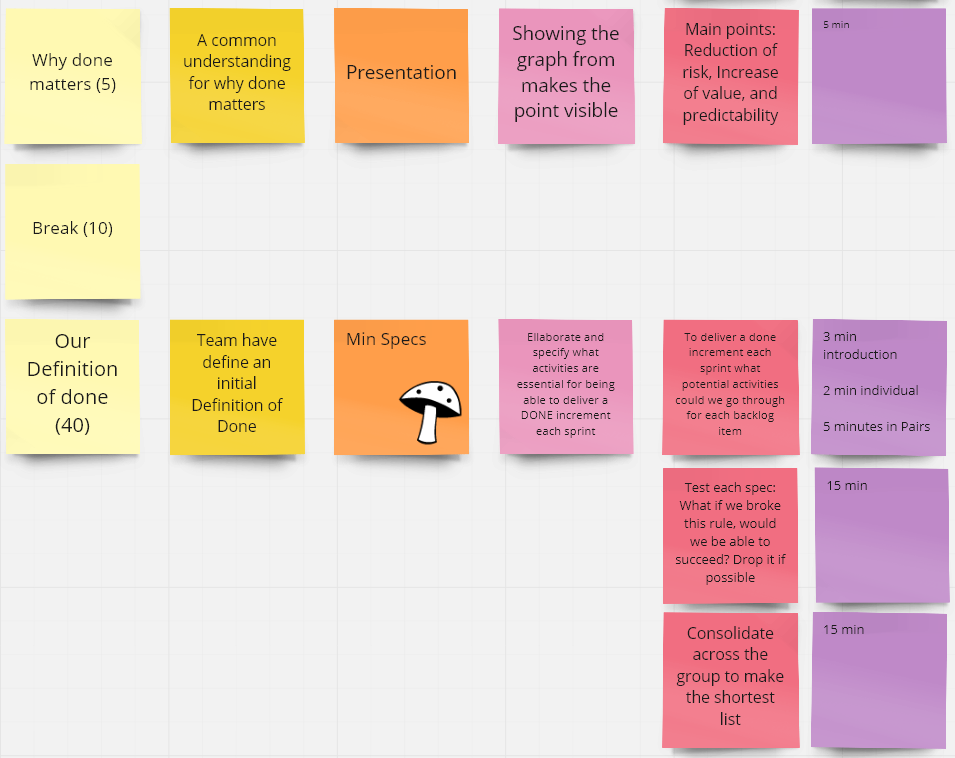Wh en a new team is formed we hope that it will be long lasting, and that it eventually will become high performing. Sometimes it happens, sometimes it doesn’t. What determines the success? Despite there are no guarantees of success, there are still things you can do to increase the likelihood of your team becoming high performing. In this blog post series, I would like to share some experiences of mine, from starting up new teams. Inspired by the Liberating Structure “Purpose-to-practice” I am helping the newly formed team to design five essential elements to make the team resilient and endurable. The 5 elements are Purpose, Principles, Participants, Structure and Practices. This post will cover my approach to help the team design practice.
Practice are key for success
After all, what we do is what determines our success. Therefore designing the element of “practice” is essential for a teams chances of success. For a Scrum team that wants to harvest the benefits of Scrum, the ability to create a “Done” increment each sprint is essential. This session is specifically designed around the practice of “getting done”. First step, of getting there, is knowing what ‘done’ means, and why it matters, and this is what this session helps explore.
Which structures and why
This session is kicked of with a 1 min self reflection, just to get peoples thinking going, before jumping in to the activity.
The backbone of this session is the Definition of Done exercise made by Christiaan and Barry from The Liberators. This exercise is designed to create transparency of the consequences of not getting to a proper state of “done”. I highly recommend purchasing this exercise (No, im not sponsored. I paid for it myself), as it is also applicable for virtual teams. Specific instructions on how to facilitate is included in the package, so I’ll leave out the details here. Overall the group get a chance to have conversation around mapping typical developer activities to common steps in development process. Hereafter the group will do the same with typical unexpected problems.

After the Definition of Done exercise I added the Liberating Structure Min Spec, to help the team form their first Definition of Done. This is for specifying the absolute must do’s to deliver a “Done” Increment, which also is a set of practices we rely on to achieve success.



My observations and experiences
- The short 1 min silent reflection in the beginning gave participants a chance to “arrive” and tune in to the topic. If time allows, it could be beneficial for the group to share there thoughts with each other.
- For a non-Scrum team, it might be beneficial to design the session around a broader question, such as “What practices much be in place in order for us to achieve success?”.
- Putting “Done” as a theme for discussions about practices, allowed me to take the Scrummaster stance of teacher to my scrum team, without being the preacher. This initiated a specific conversation on this essential practice.
- Depending on experience, the group might need some guidance on which patterns to see from the definition of done exercise.
- While there are many activities to take into account, for reaching a “done” state, the Min Spec, helped narrow the list in to the truly essential. The list became short enough for the team to actually take ownership for it. It is better to start with a list too short, which can be extended as the team gain experience, rather than making a complete list, which no one will look at because it is too comprehensive.
Source link
